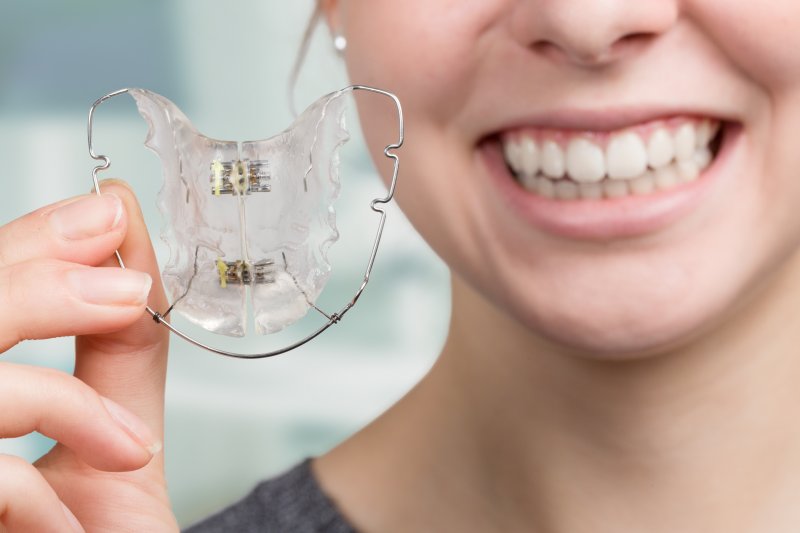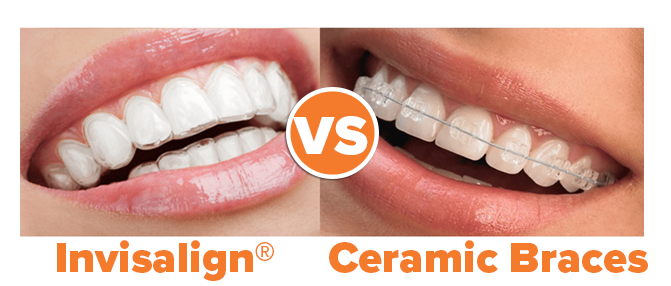How Invisalign Functions: Your Overview to Clear Aligners and Their Effectiveness
How Invisalign Functions: Your Overview to Clear Aligners and Their Effectiveness
Blog Article
Invisalign vs. Typical Braces: Which Alternative Is Right for You?
When thinking about orthodontic treatment, the option in between Invisalign and conventional dental braces provides numerous important aspects that merit cautious analysis. Invisalign provides a discreet choice with removable aligners, while conventional dental braces provide a much more noticeable yet reliable service for severe imbalance. Each alternative incorporates unique benefits and drawbacks related to looks, comfort, therapy duration, and cost. Comprehending these subtleties is critical for making an educated choice that lines up with your individual choices and way of life. The concern stays: which option will finest satisfy your orthodontic needs and assumptions?
Overview of Therapy Alternatives

In comparison, standard braces contain metal braces and wires that are bonded to the teeth. This technique applies continuous pressure over time to achieve alignment. While efficient for complex orthodontic concerns, standard braces require normal visits for changes and can pose obstacles in preserving oral health due to the problem of cleansing about wires and braces.
Both options have their merits, and the selection often hinges on particular oral conditions, way of living preferences, and client compliance. Ultimately, seeking advice from an orthodontic expert is vital for identifying one of the most ideal therapy strategy customized to private requirements. Comprehending the nuances of each choice can dramatically influence the overall success of orthodontic therapy.
Visual Factors To Consider
A substantial element affecting the option in between Invisalign and typical dental braces is the visual charm each therapy provides. Invisalign aligners are crafted from clear plastic, making them virtually unseen when worn.
On the other hand, typical dental braces contain metal braces and wires, which can be extra visible. While improvements in orthodontic innovation have actually caused the advancement of smaller brackets and tinted elastics, standard dental braces still maintain a more noticeable account. For some people, the exposure of dental braces may prevent them from looking for essential therapy.
Inevitably, the selection between Invisalign and standard dental braces might rest on personal choices pertaining to aesthetics. Individuals who prioritize discretion often lean toward Invisalign, while those who are less concerned concerning exposure may choose standard dental braces. Comprehending the visual ramifications of each option is vital for making an informed decision that aligns with one's lifestyle and preferences.
Convenience and Convenience

In regards to convenience, Invisalign aligners are removable, making it possible for patients to this website appreciate their preferred foods without constraint and maintain ideal dental health. Cleaning and flossing are streamlined, as the aligners can be secured throughout these regimens, whereas typical braces require cautious maneuvering around braces and cords.
In comparison, standard dental braces demand normal changes, making them less convenient for those with hectic timetables. In general, the comfort and comfort of Invisalign make it an enticing option for several people looking for orthodontic treatment.
Treatment Period and Performance
While both Invisalign and traditional braces are effective in dealing with dental imbalances, the period of treatment can differ considerably in between both alternatives. Typically, Invisalign therapy can take anywhere from 12 to 18 months, depending on the complexity of the case. The clear aligners work by progressively shifting teeth right into their wanted placements, and normal follow-ups with an orthodontist assistance ensure progression continues to be on course.
On the other hand, typical braces usually need a longer dedication, normally ranging from 18 months to three years. This is because of their set nature and making use of brackets and cables, which can be a lot more efficient for complicated instances and serious imbalances (Invisalign). The therapy effectiveness of typical dental braces is well-documented, as they allow for exact changes and better control over tooth movement
Inevitably, the choice in between Invisalign and typical braces may depend upon both the expected therapy duration and the specific dental problems handy. Consulting with an orthodontist is important, as they can supply tailored recommendations based on individual requirements, guaranteeing the selected technique aligns with desired outcomes and durations.
Cost Comparison and Insurance Policy Choices
Cost plays a significant role in the decision-making process for individuals thinking about orthodontic therapy, whether going with Invisalign or conventional dental braces. Usually, the expense of Invisalign arrays from $3,000 to $8,000, while conventional braces commonly set you back between $2,000 and $6,000. Variables affecting these costs include the complexity of the instance, the duration of treatment, and geographical area.
Many dental insurance coverage strategies offer partial insurance coverage for orthodontic therapies, yet the specifics can differ commonly. Usually, typical braces may be a lot more frequently covered by insurance strategies contrasted to Invisalign, which some insurance providers categorize as an aesthetic procedure.
Additionally, a number of orthodontic methods provide flexible settlement strategies, making both treatment choices more available. Individuals should inquire concerning prospective funding options and discount rates for in advance settlements. Reviewing the complete expense, consisting of insurance policy advantages and layaway plan, is necessary for making an educated choice that straightens with both aesthetic preferences and spending plan factors to consider.

Final Thought
In summary, the choice between Invisalign and standard braces rests on several aspects, including visual preferences, convenience, therapy duration, and cost. Invisalign supplies a discreet, detachable alternative that helps with oral health and dietary versatility, while typical dental my review here braces might be preferable for complex dental concerns and often come at a reduced price factor. Ultimately, consultation with an orthodontist is necessary to examine specific conditions and establish one of the most proper treatment option for accomplishing optimal oral positioning.
When taking into consideration orthodontic therapy, the choice between Invisalign and standard dental braces provides several crucial variables that merit cautious examination.Contrasting Invisalign and conventional dental braces reveals distinct treatment choices for orthodontic correction.While both Invisalign and standard braces are reliable in fixing oral imbalances, the period of treatment can vary significantly in between the two alternatives.Price plays a considerable function in the decision-making procedure for people thinking about orthodontic therapy, whether deciding for click here for more Invisalign or traditional dental braces.In summary, the choice in between Invisalign and typical braces hinges on several variables, including aesthetic choices, convenience, treatment duration, and cost.
Report this page